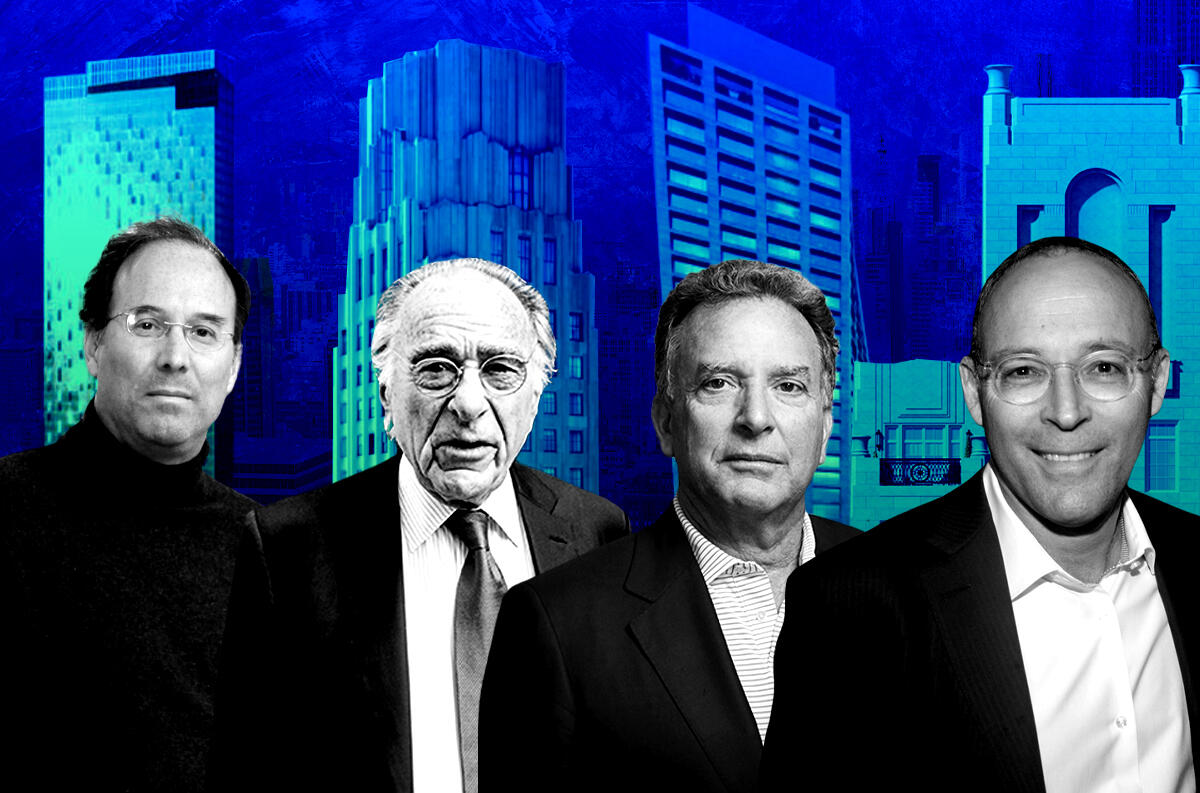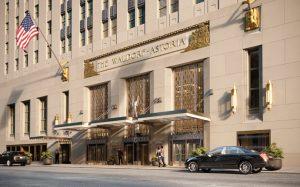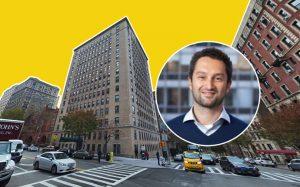Trending
Over the glut, but now what? Breaking down NYC’s new condo inventory
Tighter market in the cards with fewer land sales, conversion units

UPDATED, Aug. 15, 5:05 p.m.: On the Upper West Side, up the hill from Robert Moses’ 79th Street Boat Basin, a prewar condo conversion project is in the early stages of sales.
The building at 393 West End Avenue, put up in 1926, is being converted to 75 condos (down from an initial plan of 88) by Rabina and Simon Baron Development. Though this type of project was all the rage in the mid 2010s, it is now among a dying breed: Conversions fell out of favor in 2019, when state legislators passed new tenant protection laws meant to keep renters from being displaced.
Disappearing condo conversions, coupled with record home sales and fewer land deals, have led to a new era in the New York condo market: the end of excess inventory. If the last decade was defined by developers peddling more product than buyers could handle, the next few years may see more alignment between supply and demand.
In Manhattan, new condo inventory has fallen below 6,000 units for the first time since 2018, according to Brown Harris Stevens Development Marketing data shared with The Real Deal.
“The market will have less than four years of inventory by year-end,” said Robin Schneiderman, who oversees new development at BHS and expects Manhattan’s condo market to become supply-constrained.
The sellout price for new condo conversion inventory has fallen to $1.5 billion from more than $8 billion since 2019, and inventory fell 73 percent over the same period, according to data compiled by Schneiderman’s team. Some 1,400 conversion units have come on the market since tenant protection laws passed, down from over 5,000 in the prior five-year period, with little to no future inventory expected.
Overall, new condo inventory in Manhattan has declined about 10 percent since 2021, to 5,894 units from 6,508, according to BHS. Availability has declined 13 percent since February 2021, according to a Marketproof analysis.
While ultra-luxury homes grab the headlines, and homes priced above $10 million account for nearly 10 percent of inventory in Manhattan, buyers shopping for homes below $4 million make up about two-thirds of the market, according to BHS. That buyer pool, which is more likely to need a mortgage, could afford to splurge until recently, thanks to historically low interest rates.
Last year, the market saw monthly net absorption of 958 condo units, a jump of 58 percent over 2020, and the monthly average remained elevated through the end of May at 935, according to Marketproof. The average monthly absorption rate between 2015 and 2019 was 606 units, or 36 percent less than last year. While sales have slowed since mortgage rates shot up, the recovery after the height of the pandemic was lucrative for new condo developers.
It didn’t always appear that way.
Buyers that need financing will slow down. They will go to the rental market or compromise.
Miki Naftali insists that several of his friends called to check on his health after hearing that he planned to kick off sales at a project just months after New York City had become the pandemic’s U.S. epicenter.
Undeterred, his Naftali Group launched the Benson, a Robert A.M. Stern-designed boutique building on East 78th Street in Lenox Hill, in September 2020. Today, the building is nearly sold out. Eighteen of its 25 units have closed, property records show, including a penthouse that fetched its full asking price of $35 million, or more than $5,000 per square foot, in November 2020. Four other units are in contract, per StreetEasy.
Like a supersonic jet cruising above storm clouds, the highest-flying buyers are less vulnerable to interest rate hikes, because they often pay all-cash. Given a volatile stock market and rising inflation, captains of the universe may see real estate as a timely investment.
Real estate’s reputation as an inflation hedge is similarly potent for buyers who need financing, and those buyers got a boost when mortgage rates were low. The result was a boom in luxury new development sales that, according to Naftali, lifted the resale market, too. After 30-year mortgage rates climbed to nearly 6 percent in late June — they stand at about 5.2 percent today — contract signings for sponsor units fell 30 percent year-over-year in July, and 40 percent in Manhattan.
“Buyers that need financing will slow down,” Naftali said. “They will go to the rental market or compromise.”
Concentrated bets

Renderings of Waldorf Astoria
Eight buildings in Manhattan with about 1,200 sellable units make up nearly a fifth of the borough’s existing new condo inventory, according to BHS.
The list includes top-dollar conversions such as Dajia U.S.’s Waldorf Astoria revamp and Harry Macklowe’s One Wall Street, plus new projects such as Steve Witkoff and Len Blavatnik’s One High Line (formerly HFZ Capital’s XI) and Claremont Hall in Morningside Heights, developed by Lendlease and L+M Development Partners.
For developers, scale, or the ability to put a lot of product on a single site, can help mitigate potential cost overruns by attracting more buyers with amenity packages that smaller projects cannot afford.
The largest of the group, Extell Development’s One Manhattan Square in Two Bridges, boasts more than 100,000 square feet of amenities, including a golf simulator, cold plunge pool, cigar room and pet spa. Double-digit discounts were offered to both buyers and renters at the peak of the pandemic, but those days may be gone for good.
“We’re not changing the prices or negotiating differently, and we’re still seeing a lot of deals getting done,” said Extell’s Ari Goldstein, who works on the project and another across the East River called Brooklyn Point. The firm has thought of pivoting some of the units to rentals, given the strength of the rental market, but Goldstein said, “Our ultimate goal is to sell our condo projects.”
One Manhattan Square represents another change: a shifting landscape of tax benefits. The building is among the last new developments to offer buyers a 25-year property tax abatement under the city’s 421a program. Should lawmakers come up with a replacement to the program, it is expected to require deeper levels of affordability and unlikely to benefit new development buyers, who paid a median price of $1.7 million for their units in July and make up as little as 10 percent of the city’s condo market, according to Jonathan Miller of appraisal firm Miller Samuel.

393 West End Avenue with Simon Baron Development Group’s Matt Baron (Credit: Google Maps)
A further drag on new development has been skyrocketing construction costs, which have increased as much as 15 percent during the pandemic, according to architecture firm SLCE.
“Materials costs have risen further than labor costs,” confirmed Extell’s Goldstein. But there are signs a new building cycle could begin.
“Theoretically, the higher the hard costs, the more land prices would come down,” he said. “But that’s just theory — it doesn’t always happen.”
At the moment, land for luxury projects is trading between $400 and $500 per square foot, according to Schneiderman. That’s down about 50 percent from the peak of the market, when HFZ bought its land for the XI, before facing a reckoning across its portfolio and losing the West Chelsea project to Steve Witkoff and Len Blavatnik. Another project that suffered from high land costs: the Hayworth building at 1289 Lexington Avenue, which the Zeckendorfs rescued from Ceruzzi Properties.
By contrast, one of the best land deals since the pandemic was EJS Group’s purchase of 1305 Third Avenue for $331 per square foot, based on a $32 million purchase price. EJS, led by Ted Segal, plans to build 38 units on the site.
Overall, there are 51 buildings with 2,399 units in Manhattan’s new condo inventory pipeline, according to BHS data. Manhattan remains an island, however, and they aren’t making any more land.
“The pipeline,” said Schneiderman, “is smaller than people think.”
This story was updated to reflect a revised unit count at 393 West End Avenue.




